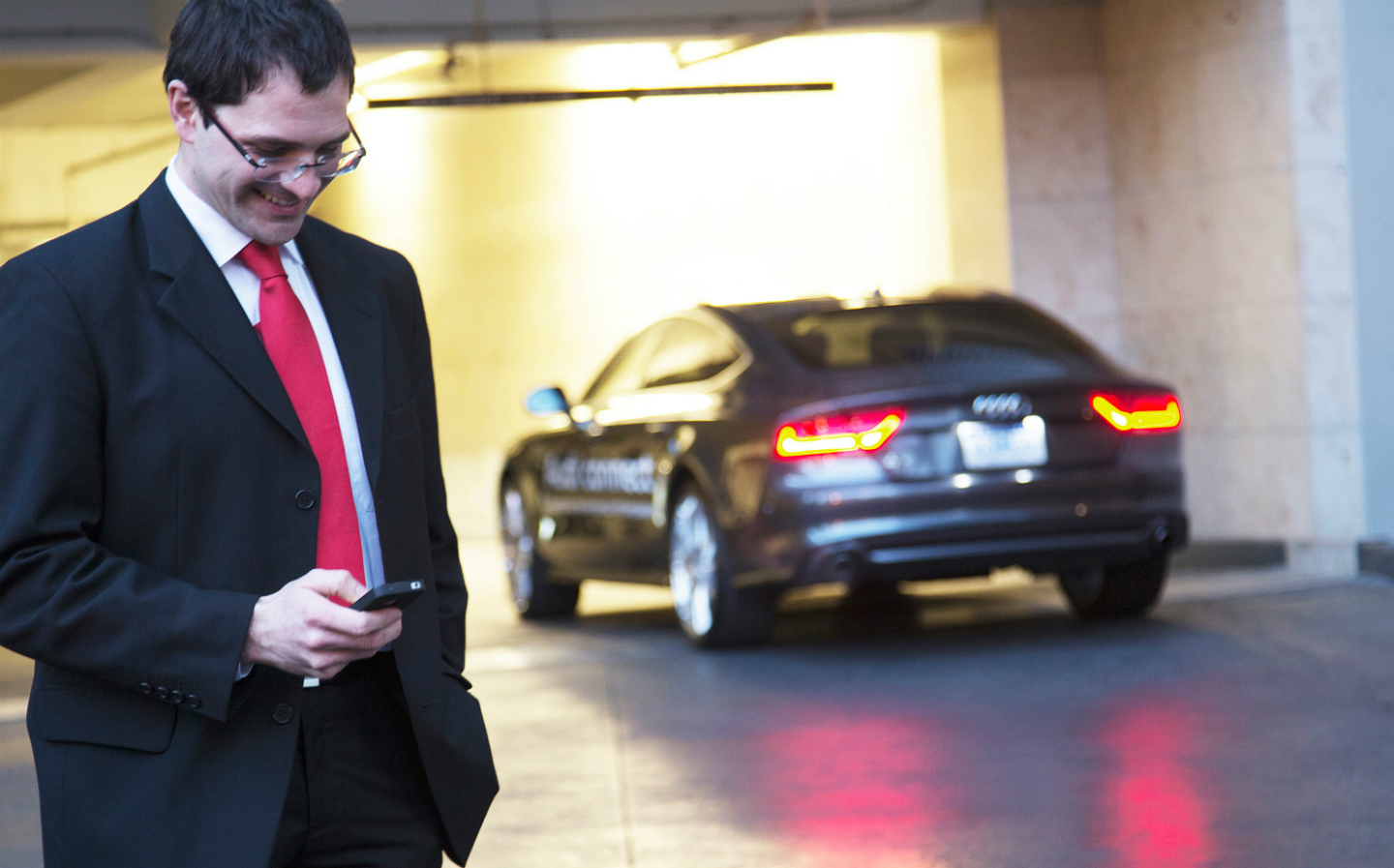Self-driving cars will be allowed to park themselves in overhaul of rules
Parking on the button
MOTORISTS WILL be able to park their car remotely using a smartphone or key fob for the first time under plans to overhaul the rules of the road.
Regulations will be updated to take account of driverless technology that allows motorists to stand on the kerbside and watch their vehicle park itself.
Remote control parking is currently available on a number of prestige models, including the BMW 5- and 7-series. It is intended to help motorists or passengers with mobility problems who struggle to get in or out of cars, as well as drivers forced to squeeze their vehicles into small garages or tight spaces.
Browse NEW or USED cars for sale
A consultation document from the Department for Transport (DfT) admits, however, that the use of a handheld device to remotely park leads to “uncertainty” at present.
Technically, it could clash with separate regulations that ban motorists from using a mobile phone or tablet computer at the wheel, putting car owners at risk of prosecution.
The DfT is proposing to amend the Road Vehicles (Construction and Use) Regulations 1986 to make it clear that remote parking devices are legal. The changes, which will be subject to a six-week consultation, will provide an “exemption into this regulation to permit the use of hand-held and mobile communications devices as a means of performing remote control parking manoeuvres”.
It will impose a limit on the device to ensure that it is used only “if a command is activated within six metres of the vehicle”. It is likely that the change will be introduced by spring next year.
The consultation also proposes adding a new rule to the Highway Code to tell drivers: “You can park your vehicle via remote control, using a legally compliant parking application or device in an appropriate way which does not endanger others.”
In a further change, the Highway Code has been amended to take account of technology that allows cars to drive themselves at speed on the motorway.
The code previously required drivers to keep their hands on the wheel at all times. However, the revised version adds that motorists can “use advanced driver assistance systems, if used in accordance with the manufacturer’s or developer’s instructions”.
The government wants to make Britain a centre for driverless car technology. This includes proposals to overhaul insurance rules to introduce one policy that covers both the vehicle and owner of an autonomous car.
Other recent plans to innovate include a pledge to test driverless trucks on motorways.
Graeme Paton
This article first appeared in The Times





